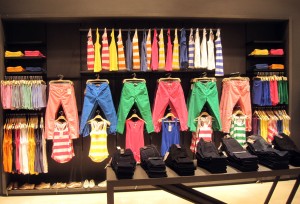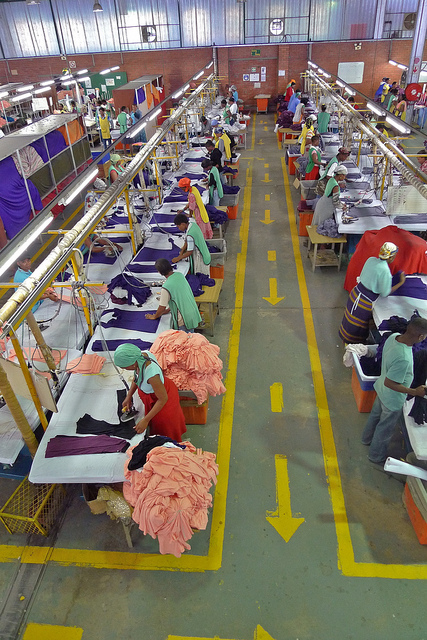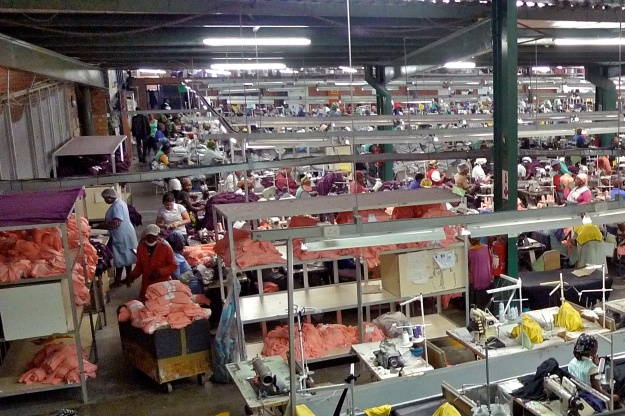By Roberta Attanasio, IEAM Blog Editor

Credit: ,
We live in the world of , which defines as low-cost clothing collections based on current, high-cost luxury fashion trends—it is a system that encourages disposability and is based on the rapid production of a large variety of clothing items that are not made to last and are used only a few times before being thrown away. Not surprisingly, the global production of clothing between 2000 and 2014. the Environmental Protection Agency, 15.1 million tons of textile waste was generated in 2013 in the United States and, of these, only 2.3 million tons were recovered through recycling. Sustainability that consumers typically associate with fashion—the result is a general lack of awareness of the environmental impact of clothes manufacturing. With the increased rapid production of large amounts of newly generated textiles, it’s time to examine on the extent of this impact.
In 2015, Eileen Fisher famously : “The clothing industry is the second-largest polluter in the world, second only to the oil industry.” Her claim has been repeated over and over again and, although not easy to verify because of lack of reliable global data to assess where the industry would rank, it points out an undeniable truth—clothing production generates high levels of pollution and other negative environmental impacts. Here is a case in point: viscose.

,
Lightweight and shiny, viscose is often used as a silk alternative with benefits—it’s cheaper and more durable. Many popular clothing brands commonly use viscose for apparel items. It also comes with drawbacks, the most notable being deforestation and pollution generated during manufacturing. Viscose is produced using cellulose from wood pulp. Although it’s often made from quick growing trees that undergo regenerative growth, about 30% of viscose production relies on old-growth, endangered forests. Once the cellulose is extracted from the wood, it gets broken down and reconstructed into fibers through processes that require harsh chemicals such as carbon disulphide, sodium hydroxide, and sulphuric acid. Carbon disulphide, which can be life-threatening to humans , is released in the air and transferred to wastewater of the viscose production process.
, “Demand for clothing made with rayon, viscose and other wood-based fabrics is mounting, which means fashion is increasingly behind the devastating loss of endangered forests around the globe. 120 million trees disappear every year into the clothing we all wear.”
The good news is that major clothing brands to no longer make products derived from ancient, endangered forests. For example, starting with the spring 2017 collection, all of is sourced from sustainable forests in Sweden. However, clothing brands need to do more, especially in response to a released June 2017 by the Changing Market Foundation.
The report details the results of an investigation into the production of viscose. The investigation “uncovered evidence of the deadly impact of dangerous chemicals and noxious gases being generated by polluting factories across Asia.” These factories, at different locations in Indonesia, China, and India, produce viscose for major European and North American fashion brands. They release highly toxic wastewater into local waterways, negatively impacting marine life and exposing workers and local populations to harmful chemicals.

Credit, ,
Natasha Hurley, Campaign Manager at Changing Markets, said in a : “This report reveals that some of the world’s biggest brands are turning a blind eye to questionable practices within their supply chains. With water pollution increasingly being recognized as a major business risk, shifting to more sustainable production processes should be high on retailers’ agendas.”
The Guardian several of the clothing brands included in the report—in response, they acknowledged that the impacts of viscose production are an industry-wide problem and said they are exploring ways to produce more responsibly.
Changing Markets is calling on retailers and brands to implement a strict zero pollution policy that relies on regular auditing of viscose suppliers. Regular auditing would ensure that the suppliers follow high manufacturing standards. Indeed, the report also highlights that new and improved viscose production methods already exist. The new methods bring manufacturing into a “closed loop” system that does not allow release of chemicals into the environment.
According to The Guardian, the fast fashion industry for the questionable practices used in the production of viscose. She said: “Clearly the viscose producers themselves have a huge responsibility here, but what has become increasingly clear is that retailers are putting huge pressure on producers and asking them to cut costs, cut delivery times – the pressure coming from the brands themselves is creating an unsustainable situation both on a social and environmental front.”

Credit, ,
Clothing consumption through the fast fashion industry is predicted to soar by 60 percent within the next 15 years, and the viscose staple fiber market is projected to grow from $13.45 billion in 2016 to $16.78 billion per year by 2021. Being a plant-based fiber, viscose is often touted as a “green choice”—however, as highlighted by the report, most viscose on the current market is actually produced using a highly chemical-intensive process. At least a few manufacturers and brands are beginning to embrace innovative, greener approaches to viscose production, signalling changes that we hope will eventually be rolled out industry-wide, so they can contribute to the transformation of the fashion industry to include environmental and social responsibility. As Stella McCartney , “Fashion is getting away with murder, and it needs to be answerable.”
Disclaimer—The views expressed on this website are those of the authors and do not represent those of the Society of Environmental Toxicology and Chemistry. Full disclaimer here.

I’m really glad to come back to this blog and find pollution discussed in the context of fast fashion. It’s a needed and overdue coverage of something that doesn’t reach the consciousness of even environmentally concerned citizens. Is it because most of this pollution occurs in other countries? Thank you for providing a forum to discuss the untold environmental damage caused by fast fashion. It’s time to spread the word and also to remind ourselves of the damage created by dyes used in clothing production and the chemical Fukushima of Indonesia which is completely killing the Citarum river and wildlife and is harming the health of uncountable people, all because of the industrial facilities that produce textiles located on the upper Citarum. Keep up the good work and bring up more awareness of this huge environmental problem.